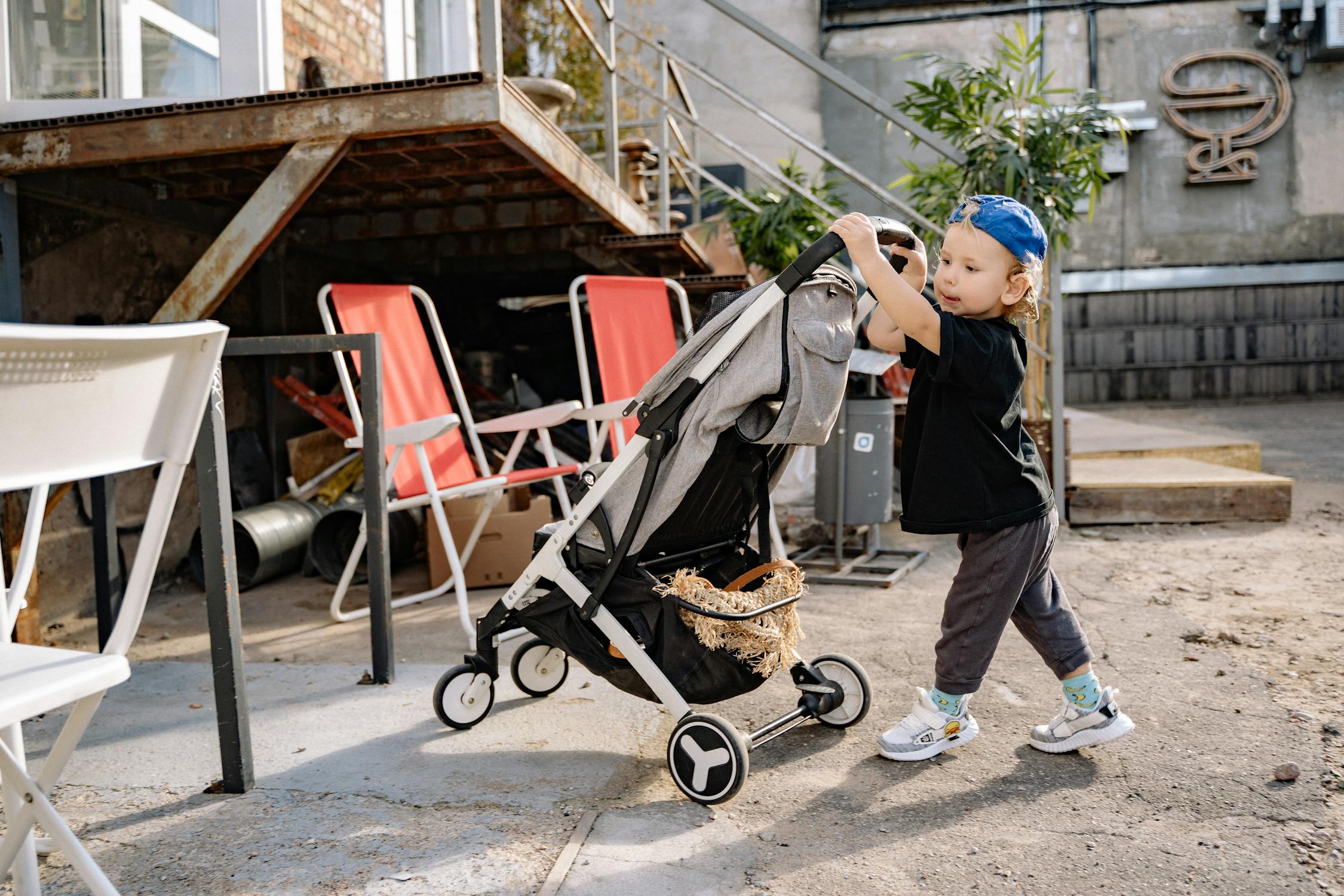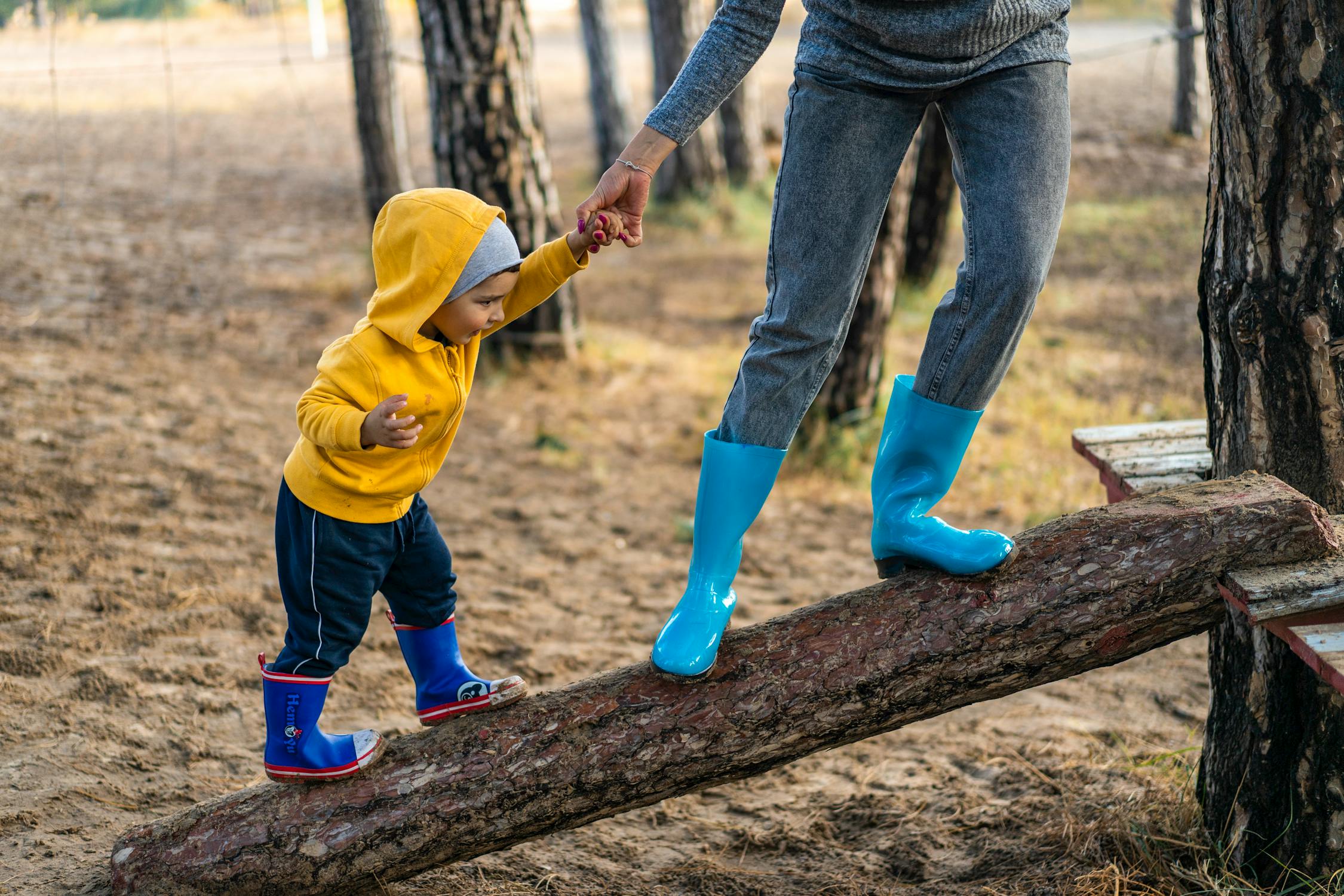The “No Phase” Explained – How to Survive Your Toddler’s Quest for Independence
Parents everywhere recognize the moment when their toddler suddenly, and without warning, discovers a new favorite word: “No!” Whether it's getting dressed, brushing teeth, or refusing a bowl of yogurt — your little one wants to do it all by themselves. Welcome to the “No Phase.”
It may feel like your child is constantly frustrated or defiant, but this phase is actually a healthy and essential part of their development. Your child is discovering their own will, experimenting with independence, and — relentlessly — testing boundaries (yours and their own). Let’s be honest: it can be completely exhausting.
The good news? You don’t have to survive it alone. In this in-depth article, I’ll share insights, strategies, and practical tips to help you not only navigate the “No Phase,” but embrace it as an important step in your child’s growth.

What is the “No Phase” and why does it happen?
The “No Phase” typically occurs between ages 1.5 and 4, when toddlers begin to understand that they have their own thoughts and desires — separate from yours. This new awareness often shows up as a strong desire for independence, frustration, tantrums, and, of course, lots of “no.”
Children want to control their world, but they don’t yet have the emotional or physical skills to handle disappointment, tricky tasks, or big feelings. That gap between “I want to” and “I can’t (yet)” is the source of many dramatic moments.
Why the “No Phase” matters
Even though it’s tough, the “No Phase” is a major milestone in your child’s psychological development. It builds the foundation for self-confidence, decision-making, and independence. Every “no” is actually a small step toward forming a sense of self.
It’s also the time when you, as a parent, begin to let go. That’s not easy — especially if you’ve done everything for your little one. But giving space within safe boundaries helps your child grow into a stronger, more secure person.
Understanding your toddler’s brain
Neurologically, toddlers are experiencing a growth spurt in the brain’s frontal lobe — the area responsible for planning, impulse control, and emotional regulation. But that part of the brain is still very immature, meaning your child may react impulsively or emotionally without any filter.
So no, they’re not “being bad” — they’re just not developmentally ready to react calmly. That awareness can help you stay more patient and compassionate (even when it’s hard).

Recognize and name emotions
That toddler screaming on the supermarket floor is overwhelmed by feelings they can’t name. By saying things like “You’re angry because you didn’t get a cookie,” you help your child put words to emotions — which is the first step in learning to manage them.
Use short sentences, stay calm, and repeat. Even if it feels like they’re not listening — they are. Toddlers learn by example.
Set clear boundaries (and stick to them)
Children need boundaries. Without them, the world feels chaotic. Simple, consistent rules create structure and safety. Just remember: being firm doesn’t mean being harsh. You can be warm and consistent at the same time.
Try saying what’s allowed instead of what’s not. For example: instead of “Don’t run,” say “Let’s walk.” It keeps things positive and easier to follow.
Stay calm during the chaos
When your toddler flips out because you gave them the “wrong” cup, it’s tempting to lose your cool too. But your calm is the anchor in their emotional storm.
Breathe deeply, count to ten, and remind yourself: you’re the grown-up. You don’t have to win — you’re here to guide.
Also: take care of yourself. Good sleep, healthy food, and moments of rest will help you stay grounded.
Give choices — smart ones
Toddlers crave control. Offer small, safe choices like “Do you want the red or blue cup?” or “Pajamas first or teeth brushing?” It gives them a sense of control without you giving up authority.
Avoid open-ended questions like “What do you want to eat?” unless you’re ready to prepare pancakes, pasta, and ice cream at the same time.
Positive reinforcement works better than punishment
What you give attention to, grows. Instead of punishing unwanted behavior, reward positive behavior. A smile, a hug, or “Wow, you did that so well!” works wonders.
Use reward systems like stickers or compliment cards. Just make sure it feels fun and not like a chore or pressure to perform.

Routines are your best friend
Predictable routines help children feel secure. Regular bedtimes, meals, and a simple morning flow give structure to their world — and yours.
Create a visual daily schedule using pictures. Toddlers process images better than spoken instructions and feel more confident when they know what to expect.
Watch for sleep, food, and sensory overload
Many meltdowns are caused by tiredness, hunger, or overstimulation. A toddler who’s had too much sugar or skipped their nap is more likely to explode over nothing.
Plan for downtime. And watch out for hidden sugar spikes — the crash afterward can trigger big emotions.
When to seek extra support
The “No Phase” is intense, but normal. That said, if you notice persistent aggression, extreme withdrawal, or disrupted sleep over time, don’t hesitate to consult a pediatrician or child psychologist.
Asking for help doesn’t mean you’ve failed — it means you’re strong enough to get support when needed.
Lean on other parents
You’re not alone. Talk to other parents, share stories, and support one another through the messy, chaotic beauty of raising toddlers. Parenting isn’t meant to be done in isolation.
Social media can help too — as long as you remember: Instagram perfection isn’t real life. We’re all doing our best, with peanut butter on our shirts and toys under our feet.
Humor is your secret weapon
Sometimes, the only thing left to do is laugh. Laugh at the chaos, the weird logic, and the moments you think, “Is this really my life?”
Trust that this phase will pass. And one day, you’ll look back fondly at the time your child ran naked into the yard because “I pick my own clothes!”
Conclusion: You're doing great — really
The “No Phase” takes a lot out of you, but your love, patience, and presence are exactly what your child needs. You don’t have to be perfect — just consistent and caring.
Every “no” they say is a step toward independence. So breathe deep, hold on, and remember: this too shall pass.
Frequently Asked Questions
What is the “No Phase”?
It’s a developmental phase (ages 1.5–4) where children discover independence and frequently use the word “no” to assert their will.
How can I stay calm during tantrums?
Breathe, pause, and remind yourself that your child is still learning emotional control. You’re the anchor they need.
Is punishment effective?
Not usually. Positive reinforcement and clear boundaries tend to work better with toddlers.
When should I seek help?
If the behavior is extreme, constant, or deeply affecting your family life — consult a professional.
Does offering choices really help?
Yes! Limited, clear choices give children a sense of autonomy without overwhelming them.
What if my child never listens?
Stay consistent, keep routines, and reward positive behavior. Toddlers learn best through structure and repetition.








